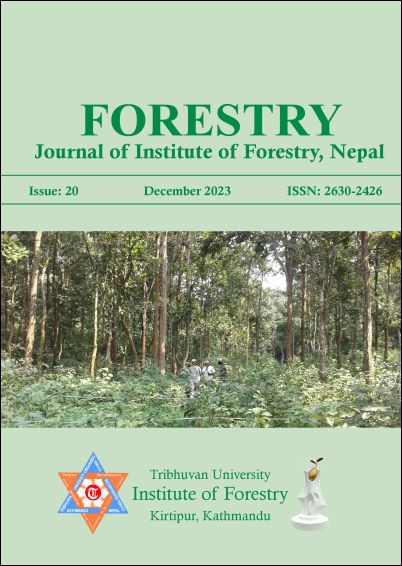Agroforestry: An Inspirational Case of Diversified Farmers Income and Climate Change Adaptation Strategy in the Mid-hills of Central Nepal
DOI:
https://doi.org/10.3126/forestry.v20i1.64266Keywords:
Agroforestry, Climate Change, Adaptation Strategy, Chepang CommunityAbstract
Agroforestry (AF) plays an important role in food security, climate change mitigation and adaptation, and environmental resources preservation and restoration. This study was carried out in Raksirang rural municipality of Makwanpur district, Nepal aiming at assessing existing AF practices, their contribution to climate change adaptation, household income and livelihood improvement of the indigenous Chepang Community. Mixed methodological approaches including key informant interviews, group discussions, household surveys were employed for data collection. The data were analyzed by using descriptive and inferential statistics (percentage, mean, frequency distribution, graphics) and F-test. Local communities have been found practicing various AF systems including Agri-silviculture, Silvo-pasture, Horti-silviculture, Apiculture and Silvo-fishery. Adoption of AF practices contributed 72.82% of total Household’s income, in which income from livestock was highest (32.88%). The strategies followed by the local communities in response to climate change included planting of trees and grasses, improved farming practices by growing commercial fruits; replacing farm activities with non-farm activities; use of farm yard manure, chemical fertilizer, pesticides and planting crop earlier than actual sowing time. Trees and grass plantation should be done periodically and promotion of Non-Timber Forest Products (NTFPs) in their AF practices should be encouraged. It will finally contribute in the improvement of local adaptation.
Downloads
Downloads
Published
How to Cite
Issue
Section
License
© Tribhuvan University, Institute of Forestry




